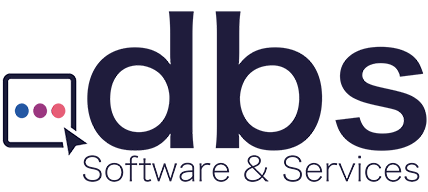
Are you wasting time and money by not using a Document Management System (DMS)?
The problems with paper filing cabinets and manual paper forms aren’t evident right away. After all, using paper is the way things have been done forever, so the adverse consequences don’t seem obvious, nor do the possible solutions. And this leads many organizations to accept the status quo, and by default also accept the untold amount of money and time they’re losing in the flow of traditional paper-based processes.
Time and its value are among the most vital resources in the business world. Organizations that make the best use of time are often more efficient and thereby more profitable than those that do not. So, it is a worthy exercise to calculate the amount of time invested in your business function. Taking that perspective into account, you’ll see how things add up when you analyze your current method of managing documents vs using a document management system.
So as to not oversell this conclusion, let’s approach the analysis methodically.
What is the actual cost of paper to your organization?
Paper cost calculation is a method of estimating the costs involved in maintaining your paper filing systems. It reveals the true cost of your filing system to your organization or put another way it’s the starting point for quantifying the savings you could achieve with a proper document management system. .
Following are the factors that go into estimating the actual cost of paper, and paper-based processes to your organization. The math is quite simple. However, recognizing and measuring some of the factors involved can be quite challenging.
- The direct cost of paper
This includes the cost of reams, the filing supplies, stationery, printing overheads, and running costs such as toner, the labor involved in printing, and other such expenses. These are fairly straightforward to estimate and calculate.
- The indirect cost of paper
This includes all the overhead expenses related to managing paper such as filing cabinets, the office floorspace used in the storage of documents (both on-site, off-site, and third-party), the costs involved in archiving, photocopying, distribution and postage. Even shredding and destruction of paper is an indirect cost. All such indirect costs add up to a tidy sum that eats into your bottom line.
- The time-cost of paper
Think of all the minute processes involved in managing a paper-based workflow. From manually filling forms, timesheets, and job sheets, to scanning documents, to manual data entry – they all add up in terms of man-hours. In fact, it is a self-sustaining redundancy where labor is employed where it needn’t be. Not to mention the time lost in physically searching, archiving, and locating the documents. This is often a cost that goes unaccounted for.
- The cost of lost productivity
It was reported by McKinsey that employees search and gather information for 1.8 hours per day on average – 9.3 hours per week. In other words, businesses hire five employees and only four appear at work; the fifth wanders around looking for answers without contributing anything.
Furthermore, the delays caused due to the physical movement of paper files from desk to desk before actions like verification and approvals are taken add up over the scale of an enterprise.
- The risk of paper-based processes
Risk can be seen as an unexpected disruptive cost. Files going missing, security breaches, leakage of critical confidential information, untraceability of such leaks, regulatory non-compliance, irreversible reputational damage are among the risks associated with paper-based processes. It has been estimated that 70% of businesses would cease to exist within three weeks if their paper records were lost in a fire or flood.
Even a single such event can turn into a debilitating expense overnight, if not an existential threat. Since this is a matter of probability, it is hard to recognize as a cost.
- The opportunity cost of not going paperless.
A business should also consider the overall impact of a document management setup – from departmental improvements to enterprise-wide advantages. It can be increased productivity with a DMS, from regulatory compliance to improved communications, the minable data and business function insights, business process and workflow automation, integration with scalable processes like CRM. This is an incalculable opportunity cost which only compounds when you consider that your competitors may already be reaping the rich benefits of transitioning to a DMS early.
So yes indeed,
You are wasting your time and money by not using a document management system.
The only question is, how much? The question may seem almost redundant. However, it becomes important when you need to build a business case for using a document management system in your organization. For that, you may need to clearly demonstrate its benefits as a projected return-on-investment.
Calculating the ROI on investing in a document management system.
The actual arithmetic would need to be adjusted to your organization. However, the common parameters include the size of the organization, the number of employees involved in paper-based processes, their average hourly wages, the number of copies made daily, the percentage of files lost or misplaced, the square-footage dedicated to filing cabinets, and the price per square foot of office space, etc.
Subtracting the initial investments and running costs of a document management system from the actual cost of paper would help you arrive at your net savings from making the big move. Or, to put it differently,
Final ROI = The annual cost of your DMS system – Annual cost of your paper filing system.
This figure is clear-cut, defensible, and can be used to make a compelling business case for your DMS investment. However, given the many variables and incongruous definitions of the intangible benefits make it challenging to apply a definitive formula to the calculation. Given the prospect of impacting business performance and mission outcomes is undeniable so any organization is well advised to at least try it out.
A good place to start without wasting a lot of time would be, this helpful Papercost Calculator by dbs Software & Services. It calculates your cost of maintaining a paper filing system based on the parameters mentioned above.. The output of the calculator can provide the monetary foundation from which to build your business case for implementing a comprehensive Document Management System like Tessi Docubase®

dbs Software & Services (dbs) is a long-standing provider of document management and process automation solutions for education and business, and the exclusive provider of Tessi Docubase® in North America.
Tessi Docubase® is an enterprise-grade modular, secure, and easy-to-use document management system that seamlessly integrates with Business Information Systems. Its secure architecture and a broad range of features make it the perfect solution for a wide range of enterprises and use cases.
dbs LiveForms, is a low-code Business Process Automation platform. Its sole focus is simplifying complex processes by automating repetitive steps – from data capture to alerts, notifications, email confirmations, and everything in between quickly, without involving a programmer.
dbs eSign is a cloud-based electronic signature solution that allows users to manage the signing process for a document, from upload to signing and sealing, from any mobile device or computer.

Leave A Comment